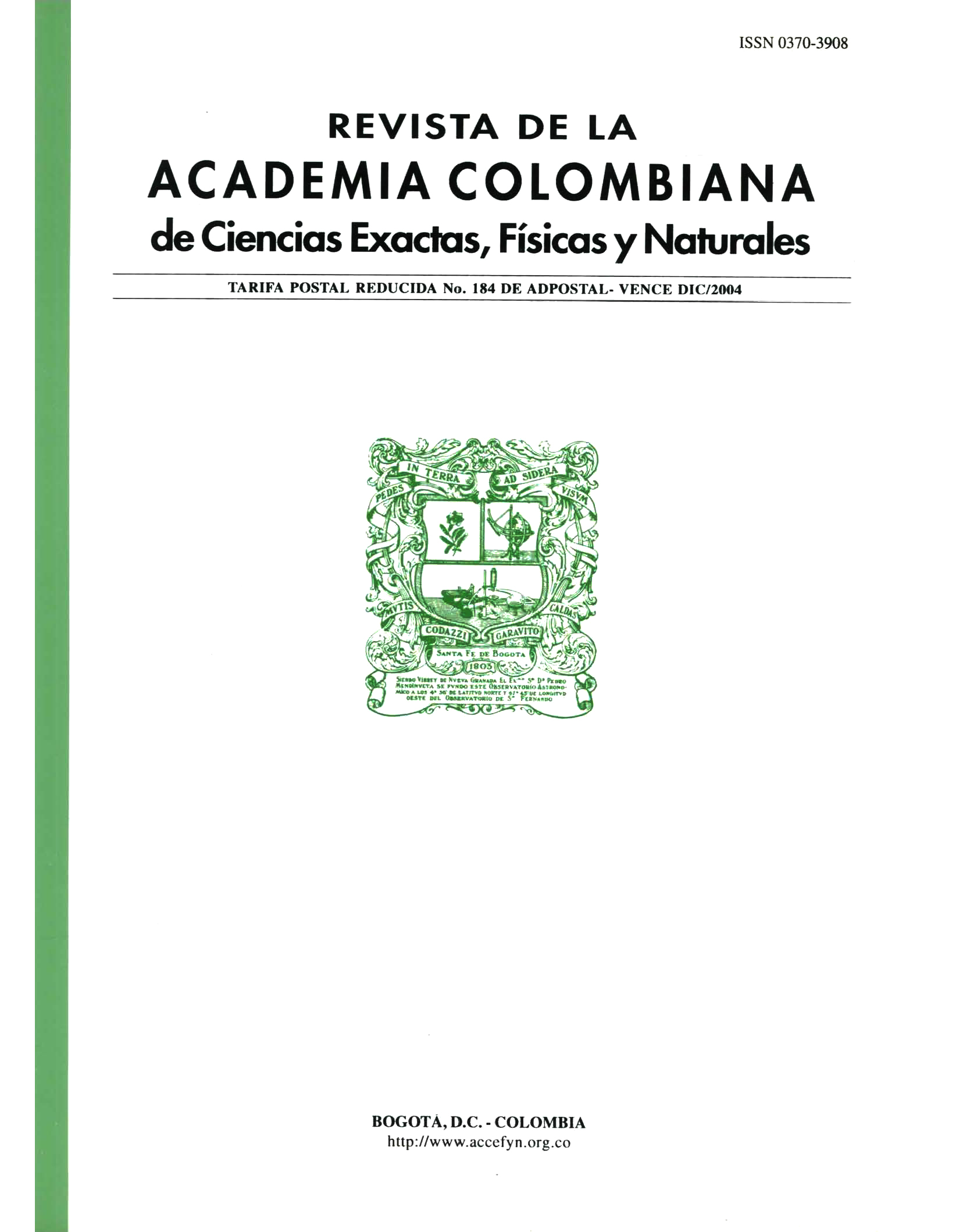Resumen
Existen tres hipótesis biogeográficas que se aplican para los bosques de tierras bajas al oriente de los Andes colombianos y los datos de la distribución de Osteocephalus planiceps no coinciden. Existen otros datos para la distribución de una rana arborícola (Hypsiboas hutchinsi) que sí lo están para una pero no para las otras dos. Las tres hipótesis requieren estudios serios para determinar que al menos una es consistente con los datos que se obtienen en las bases de datos disponibles en los museos colombianos.
Referencias
Acosta, A. R. 2000. Ranas, salamandras y caecilias (Tetrapoda:Amphibia) de Colombia. Biota Colombiana 1: 289-319.
Brooks, J. L. 1984. Just Before The Origen/ Alfred Russel Wallace’s Theory of Evolution. Columbia University Press, New York. 284 pp.
Cochran, D. M. & C. J. Goin. 1970. Frogs of Colombia. United States National Museum Bulletin (288): 1-655.
Cope, E. D. 1874. On some Batrachia and Nematognathi brought from the upper Amazon by Prof. Orton. Proceedings of the Academy of Natural Sciences of Philadelphia 25: 120-137.
Duellman, W. E. & J. R. Mendelsohn III. 1995. Amphibians and reptiles from northern Departamento Loreto, Peru: taxonomy and biogeography. The University of Kansas Science Bulletin 55: 329-376.
Fandiño Lozano, M. & W. van Wyngaarden. 2005. Prioridades de Conservación Biológica para Colombia. Grupo ARCO, Bogotá. 188 pp.
Ghiselin, M. T. 1969. The Triumph of the Darwinian Method. University of California Press, Berkeley. 287 pp.
Hernández Camacho, J. I., A. H. Guerra, R. O. Quijano & T. Walschburger. 1992. Unidades biogeográficas de Colombia. Pp. 105-151, En G. Halffter (ed.) La Diversidad Biológica de Iberoamérica. Acta Zoológica Mexicana (n.s.). 389 pp.
Lynch, J. D. 2005. Discovery of the richest frog fauna in the world an exploration of the forests to the north of Leticia. Rev. Acad. Colomb. Cienc. Ex. Fís. Nat. 29: 581-588.
Lynch, J. D. & W. E. Duellman. 1997. Frogs of the Genus Eleutherodactylus (Leptodactylidae) in Western Ecuador: Systematics, Ecology, and Biogeography. Natural History Museum, the University of Kansas, Special Publication (23):1-236.
Morrone, J. J. 2000. A new regional biogeography of the Amazonian subregion, mainly based on animal taxa. Anales del Instituto de Biología Universidad Nacional Autónoma de Mexico, ser. Zoología 71 (2): 99-123.
Nelson, G. & N. Platnick. 1981. Systematics and Biogeography/Cladistics and Vicariance. Columbia University Press, New York. 567 pp.
Platnick, N. I. 1991. On areas of endemism, 2 pp (unnumbered), In P. Y. Ladiges, C. J. Humphries & L. W. Martinelli. Austral Biogeography. Australian Systematic Botany 4. CSIRO Press, Australia. 120 pp.
Pyburn, W. F. & D. H. Hall. 1984. A new stream-inhabiting treefrog (Anura: Hylidae) from southeastern Colombia. Herpetologica 40: 366-372.
Trueb, L. & W. E. Duellman. 1971. A synopsis of Neotropical hylid frogs, genus Osteocephalus. Occasional Papers of the Museum of Natural History/ the University of Kansas/ Lawrence, Kansas (1): 1-47.

Esta obra está bajo una licencia internacional Creative Commons Atribución-NoComercial-SinDerivadas 4.0.
Derechos de autor 2023 Revista de la Academia Colombiana de Ciencias Exactas, Físicas y Naturales

